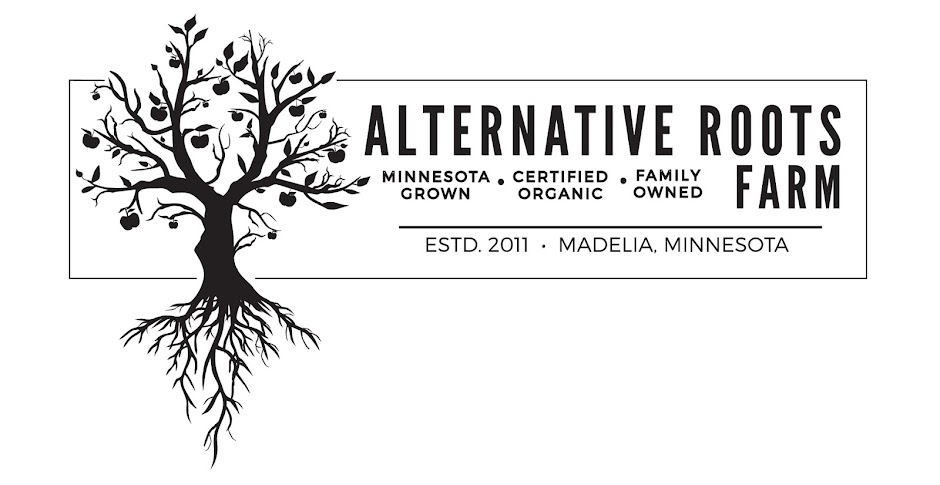We haven't had much of the above "wintry" weather, but the ground freeze up is a blessing.Today winter is trying. It's Minnesota, Old Man Winter will eventually show up, the question is just if we get to take out our cross-country skis or not. The mild temps aren't bad for the new little porcine nuggets running around the pasture though.
Winter means conference season for us farmers. Time to reconnect with other farmers in our network, immerse ourselves in continuing education and research. The first weekend in December Brooke went to the Midwest CSA Conference in Wisconsin. Enjoying workshops like "Deepening the 'C' in CSA" (above), What's In Your Box, Diversified CSA and Best Practice in Member Communication (below).
A room full of three hundred farmers and an inspiring keynote speaker (below) is always invigorating. Keynote Steven McFadden believe that CSA can be a "cultural, social, environmental and dietary cornerstone moving forward" for our country. There was also a farmer panel on the Changing Landscape of CSA.
From conference to volunteer meeting with the Land Stewardship Project. Participating in a series of brainstorming sessions for the benefit of the organizations forward momentum. It feels great to be giving back to an organization that has so strongly supported and benefited us as beginning farmers. Consider them in your year-end giving and/or become a member, they do great work for our state, and our farmers.
The greenhouse is 99% complete and ready for action! Since the above photo those bottom board have been installed ;) Just a few little final touches, install some tables and she's ready for spring transplants! Woot! This accomplishment feels fantastic.
If you follow our feed on facebook or instagram you know that we have new piglets on the farm! Vera is due this week, and we can't wait to welcome her piglets to the existing rambunctious herd of 17 that are about a month old. So far our first winter farrowing has gone very smoothly, we get better at this each and every time (well I suppose the ladies do most of the work ;). The first batch is castrated (it's always nice to put that behind us) and growing nicely - Sir Renfred has "proven" himself.
The piglets are super spotty! Amazing little creatures :)
Well now you are all caught up on your farm news for the holidays! We hope you and yours have a happy, healthful, stress-free holiday with good food and good company.
Cheers!
In gratitude,
Brooke, John and Emily Knisley
(plus farm dog Hazel, farm cat Ivan, all the bird-brained hens, Vera, Elsa & piglets, Suzy & piglets, a hamster, and a visiting hermit crab)
PS I promise more piglet photos will follow!



















































